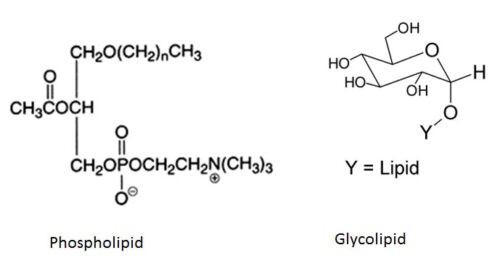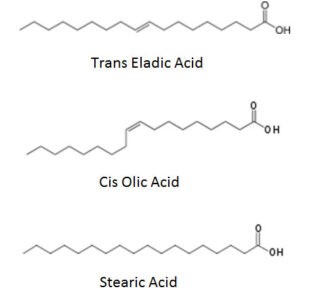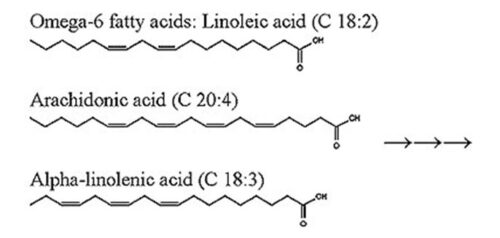Lipids are high-energy nutrients that are used in fish farming as a partial alternative to protein. It provides almost twice as much energy as protein and carbohydrates. It is an important component of the diet because it is rich in fat-soluble vitamins and essential fatty acids. Lipids work with proteins as important components of the cell membrane and mitochondria. It is a naturally occurring organic compound commonly known as oil and fat. It manages cell structure, energy storage and various biological functions. Hence you should offer necessary lipid requirements for fish.
General Characteristics of Lipid
- Lipids are usually insoluble in water.
- They are soluble in nonpolar solvents such as ether, chloroform, acetone, benzene, methanol.
- It acts as an electrical insulator that encloses the axons of nerve cells.
- They are solid at normal temperatures because lipids contain saturated fatty acids.
- Vegetable lipids are unsaturated and remain liquid at normal temperatures.
- Lipid is hydrolyzed by enzymes to produce fatty acids and glycerol.
Biological Functions of Lipid
- Lipids act as compound stores that store energy in the body.
- It acts as an important component of the cell membrane.
- Lipids act as a source of fat-soluble vitamins such as A D E K.
- It acts as a source for several enzyme systems.
- Some lipids such as prostaglandins and steroid hormones regulate cell metabolism.
- Unsaturated phospholipids provide flexibility of the cell membrane.
- It plays a role in keeping the body temperature stable.
- The fat stored under the skin acts as thermal insulation.
- Lipoprotein helps in energy production.
- It acts as a carrier of phospholipid ions.
- Lipids in the myelin sheath of the nervous system of animals act as electrical insulators.
Classification of Lipid
Lipids are mainly divided into three parts, viz
1. Simple Lipid: Simple lipids are esters of different types of alcoholic fatty acids. These are again of two types, viz
(A) Fats and oils: The esters of glycerol-containing fatty acids are called fats and oils. Fats are solid at normal temperatures while oils are liquid.
(B) Waxes: Waxes are generally esters of long chain fatty acids containing alcohol. Such fatty acids are aliphatic or alycyclic. Cetyl alcohol is found in wax.
2. Complex Lipid: The esters of alcohol and other fatty acids are called compound lipids. Such lipids are again of different types, viz
(A) Phospholipid: A lipid that contains phosphoric acid, nitrogen base and other compounds in addition to fatty acids and alcohol is called phospholipid.
(B) Glycolipid: A lipid which contains fatty acids, sphingosine, carbohydrates and nitrogen base but phosphate is absent is called glycolipid.
(C) Lipoprotein: Large molecular compound of protein-containing lipids is called lipoprotein.

(D) Sulpholipid: Lipids which contain sulfate compounds with fatty acids are called sulfolipids
(E) Aminolipid: The lipid that contains amino acids is called aminolipid.
3. Derived lipid: Derived lipid is a type of lipid that is formed by moisture analysis of simple and composite lipids. Such lipids contain fatty acids, alcohol, monoglycerides, and diglycerides. Examples of such lipids are steroids, terpenes and keratinoids.
Types of Fat
There are 4 types of fats in food, viz
Healthy fats-unsaturates
1. Monounsaturated Fat/Monounsaturates
2. Polyunsaturated fats/Polyunsaturates
- Omega-3 fat
- Omega-6 fat
Unhealthy fats
3. Saturated fats
4. Trans fats
Below is a description of them:
1. Monounsaturated Fat
This type of fat is mostly composed of monounsaturated fatty acids. In this case, there is a double bond between the carbon atoms and a single bond between the other carbon atoms. They are liquid at room temperature. Such as olive nut and canola oil. They protect against heart disease. They lower the blood cholesterol levels.
2. Polyunsaturated Fat
This type of fat is mostly composed of fatty acids such as linoleic or linolenic acid. Each molecule of this type of fat has two or more bonds. Such as corn oil, sunflower oil. They are also liquid at room temperature. They can be further divided into omega-3 and omega-6 groups. It is thought that unsaturated fats reduce the risk of heart disease. Omega-3 fats play a role in heart and brain and eye function. Oily fish such as salmon, herring and mackerel are examples of omega 3s and are found in cazu nuts, some oils such as soybeans and rapeseed.
You might also read: Protein Requirements of Fish
3. Saturated Fat
This type of fat is composed of a chain of fatty acids. There is no binding between the carbon atoms in the chain. Carbon atoms attached to hydrogen atoms are called saturated hydrocarbons because they are saturated. These fats are solid at room temperature. In most cases, such fats are found in animals, such as butter, ghee, cheese, curds, etc. They provide an important source of energy in food. They are used as a structural component of cell membranes, various types of hormones or hormone-like components. Excess fat in the diet increases the amount of cholesterol in the bloodstream.
4. Trans Fats
These types of fats are in a cis or straight trans condition with different chemical structures. When fatty acid transforms from fat, it is called trans fatty acid. It is produced by partially adding hydrogen to vegetable oil. Vegetable oils, most butter, commercial bakery foods and many dry foods contain such fats. Excessive amounts in the diet increase the risk of heart disease. Elaidic acid is the main trans-unsaturated fatty acid found in hydrogenated vegetable oils. Oleic acid is an unsaturated fatty acid. 55-60% of olive oil is unsaturated fatty acids. Stearic acid, on the other hand, is a saturated fatty acid found in animal fats. Such fats are in both trans or sis forms.

Essential Fatty Acids
Essential fatty acids are fats that are not produced in the body by synthesis in physiological processes but are essential for the maintenance of various biological functions. Since such fatty acids are essential, they need to be supplied with food from outside. Three fatty acids are essential for fish, viz
- Lenoleic acid
- Lenolenic acid
- Arachidonic acid

Chemical Structure of Essential Fatty Acid
Functions of Fat
- It plays a role in normal growth and development.
- It produces energy in the body.
- It gives strength to the body.
- It maintains cell membranes.
- It brings taste and stability to food.
Fat Requirements of Fish
Fat is one of the main sources of energy. It helps in the metabolism of fish. Fat also serves as a source of essential fatty acids for fish. Carp needs 1 percent of the essential fatty acids in their diet. Ponds contain a variety of natural foods such as small algae and animal feed and other aquatic organisms that contain lipids. Different types of culturable carp meet the demand for essential fats and essential fatty acids from natural foods.
Fish foods generally contain 15% lipids and provide essential fatty acids. Moreover lipids play a role in the transport of fat-soluble vitamins. Currently, high levels of lipids are used in fish feed. While the use of excess lipids in food can be used as a substitute for partial protein to help reduce the high value of fish meal, excess lipids accumulate in the liver and reduce the growth and market value of fish.
Simple lipids include fatty acids and triglycerides. Fish basically needs omega-3 and omega-6 fatty acids. Marine fish oil naturally contains high levels of omega-3 highly unsaturated fatty acids (HUFA). Marine fish need omega-3 HUFA for moderate growth and health. The amount of HUFA is 0.5-2% of dry food. The two main essential fatty acids in this group are ecosapentenoic acid (EPA: 20: 5n-3) and docosahexaenoic acid (DHA: 22: 6n-3). Freshwater fish do not need long chain HUFA but often need 16 carbon n-3 fatty acids i.e. linolenic acid. This acid requires 0.5-1.5% of dry food. Many freshwater fish cannot produce this acid, so they must be supplied with food. Such acids are required for other metabolic activities and for the formation of cell membrane components. Other fish species, such as tilapia, require amino acids in the omega-6 group, and carp require a combination of omega-3 and omega-6 fatty acids.
Inadequate ecosapentenoic acid (EPA) in the diet can lead to certain behavioral and physiological abnormalities, such as poor diet, abnormal swimming, low physical growth, increased mortality (especially in larval stage), swollen liver, bloating, and cramps. And problems with proliferation, abnormal color formation, separation of glandular epithelium, decreased immunity, and increased cortisol levels (Izquierdo, 1996). In addition, the lack of such compounds in the diet reduces the ovulation and fertilization rate of mammals, impaired embryo development and larval quality (Izquierdo et al., 2001a).
Various environmental regulators such as temperature (Farkas et al., 1980; Olsen et al., 1999), salinity (Borlongan and Benitez, 1992), light (Ota and Yamada, 1971) affect the structural composition of lipids in fish tissue. Different environmental conditions affect the demand for ecosapentenoic (EPA) in fish. As the water temperature decreases, the concentration of highly unsaturated fatty acids in carp tissues (kadhudhasadh bha dhas., 198) or salmon docosahexaenoic acid increases (Olsen and Skjervold, 1995).
The decrease in water temperature has an effect on the action of lipolytic and lipogenic enzymes. As salinity increases, the concentrations of polyunsaturated fatty acids (PUFA), especially docosahexaenoic (DHA) and arachidonic acids, are found to increase in the tissues of farmed fish such as poecilia reticulata and milk fish (Chanos chanos). These fatty acids are known to play an important role in regulating secretion (Sampekalo et al., 1992). Although the lack of omega-3 fatty acids in the diet has increased the mortality rate of marine rainbow trout, it has not been a cause of death for freshwater fish (Lall and Bishop, 1976).
Finally, fish farming management can be improved by reducing the deficiency of essential fatty acids, such as fish oil and its partial or complete alternative food ingredients, or by reducing other environmental pressures.
Table: Requirements of Fats and Essential Fatty Acid in different species of fish.
|
Fish Species |
Fat Requirements (%) |
Essential Fatty Acid Requirements(%) | |
|---|---|---|---|
|
Linolic Acid |
Rinolinic Acid | ||
|
Cyprinus carpio |
5-10 |
1.0 |
1.0 |
|
Clarius batrachus |
8-10 |
– |
0.5 |
|
Oreochromis mossambicus |
8-10 |
1.0 |
– |
|
Macrobrachium rosenbergii |
5-8 |
1.0 |
1.0 |
|
Penaeus monodon |
5-8 |
– |
1.0 |

Fig.: Flow diagram for fatty acid synthesis mechanisms in fish – Saturated and monoenoic fatty acids (Adapted from Castell, 1979)

Fig.: Flow diagram for fatty acid synthesis mechanisms in fish – Polyunsaturated fatty acids (Adapted from Castell, 1979)
